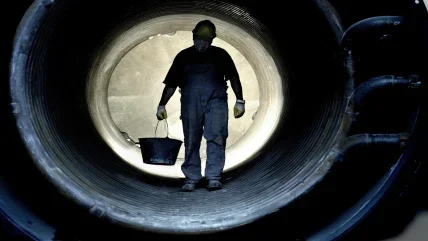
Geotechnical Baseline Reports (GBRs) ARE an established way of managing geotechnical risk on tunnelling projects. However, there is no standardised UK approach on writing such reports, what they should include and how their use can benefit clients and contractors. The drafting of GBRs is not supported in the same way by British Standards as are ground investigation reports (GIRs) and geotechnical design reports (GDRs).
To address the situation, CIRIA (the Construction Industry Research and Information Association) is to publish a goodpractice guide on writing GBRs. Scheduled for publication in spring 2021, it targets clients, contractors, consultants, insurers, and others and is supported by the British Tunnelling Society, the British Geotechnical Association and other industry bodies.
GBR Reporting Is Different
Geotechnical reporting traditionally takes two forms: factual and interpretative; both have British Standards available. However, GBR reporting differs because it covers the commercial aspects of geotechnical risk and is not used for geotechnical design. Both the tunnelling and insurance sectors are very positive about GBRs, particularly to ensure compliance with the Code of Practice for Risk Management of Tunnel Works. In addition, the CIRIA guide aims to include piling and earthworks.
UK engineers do not have much guidance on writing GBRs. They could refer to the ‘Geotechnical Baseline Reports for Construction – Suggested Guidelines’ from the American Society of Civil Engineers (ASCE). Although extensive and well regarded, the ASCE guide is based on American practice and experience.
Why a GBR Is Important
Poor or insufficient ground investigations are a constant and potentially costly issue in underground construction. GBRs contain definitive geotechnical statements about the ground and can be used to tender contracts and as a reference to encountered conditions during the works. They can reduce project cost, provide more cost certainty, and allocate risk. They provide a clear mechanism for compensation events under the NEC form of contract and other forms where provision is made.
GBRs have been used in tunnelling for some time, particularly on larger infrastructure projects such as Crossrail. But many have been project-specific – created by team members using ASCE principles and practices gained from previous projects. Kieran Tully, associate director at CIRIA, told T&T: “With a GBR, all parties to a project should know their responsibilities. It can help reduce claims and provide a clearer mechanism for dealing with compensation events. A GBR can bring commercial benefits and should allow greater attention to be focused on delivering the contract.”
Clearly, there are good reasons to ensure a GBR is written authoritatively and based on industry-agreed guidelines. It stipulates both the contractual conditions (‘baselines’) and the anticipated geotechnical circumstances. With a GBR in place, all parties to the contract can see clearly where their responsibilities lie: the contractor can be allocated risks based on conditions that are consistent with or less adverse than the baselines; while the client can accept those risks that are materially more adverse than the baselines.
In some cases, GBRs may be deemed unnecessary due to the work involved and the cost-benefit ratio. As funders of projects, clients can be primary movers in ensuring ground investigations are carried out sufficiently well. The ground engineering industry supports this approach, can advise clients accordingly and undertake work to achieve this aim. However, a small site with a good ground investigation seldom needs a GBR. In another scenario, a contractor with good local knowledge of ground conditions may accept greater risk than normal, which is a commercial decision not uncommon in a competitive market.
Writing The Report
CIRIA used selective tendering overseen by an independent panel to choose the report authors. It awarded the contract to the consortium comprising Mott MacDonald (MM) and Geotechnical Consulting Group (GCG), both of whom have extensive GBR experience in the UK and internationally. They are writing three drafts, each getting input from a highly experienced steering group comprising the BTS, BGA, clients, consultants and contractors. After review of the third and final draft, the report will go for independent peer review before publication.
CIRIA has stated the project’s key objectives will be to:
- Define the purpose of a GBR and how it is used to manage geological and geotechnical risk.
- Cover GBRs for different forms of procurement and contract types suitable for incorporating GBRs, including NEC3 and 4.
- Discuss the multidisciplinary approach to successful drafting of GBRs including contract documents, baseline statements for natural ground, geological features, man-made changes and mechanisms for additional payment.
- Include case studies to show good practice.
Mr Tully concluded: “One of the key messages for CIRIA in our mission to improve the performance of the construction industry and the built environment is that the guide is the start, the output that gives people an organisational capability, to do things in a better way based on good practice. This can be seen through the benefits delivered.”






